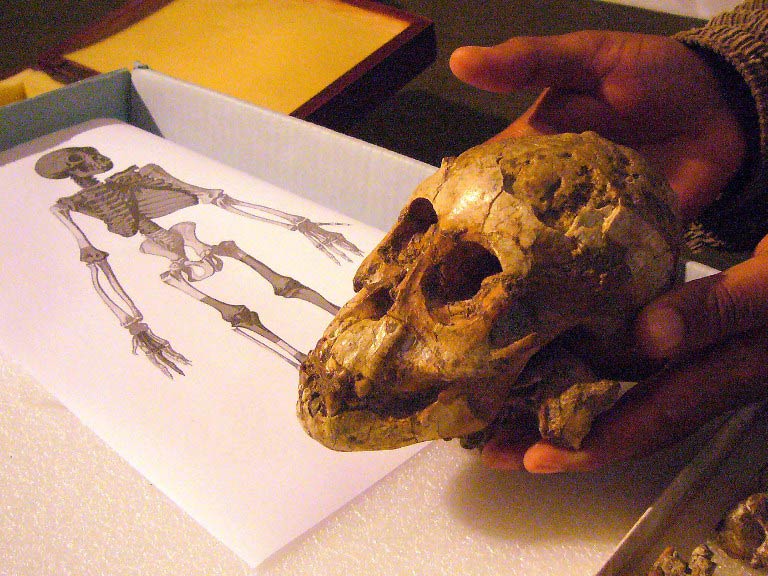Not even a head of state can expect this kind of reception in Ethiopia.
When two heavy suitcases with the remains of Lucy were brought to the national museum in Addis Ababa on Wednesday, there was no holding back the emotions of onlookers and even journalists.
The 3.2-million-year-old fossil of a female hominid had been on tour throughout the United States for the past five years. Now Lucy is back in her African homeland. A woman wearing traditional African garb even offered a red rose to welcome Lucy’s return.
“There was a feeling of emptiness in Ethiopia while she was away,” said anthropology professor Berhane Asfaw, who has been researching human evolution for the past 30 years. “Lucy is an icon for all the people in the country.”
US palaeoanthropologist Donald Johanson, who made the discovery of the bones in the Afar Triangle in 1974, also did not pass up the opportunity to take part in the welcoming ceremonies.
“Lucy has a message that overcomes all cultural barriers,” Johanson said. “She is proof that the seven billion people in the world all have the same origin and that basically speaking, we are all Africans.”
But this alone does not explain the worldwide fascination for the skeleton of the “Australopithecus afarensis”, a primate closely related to the Homo genus, which includes modern-day human beings. Johanson said he believes people see more than just a fossil in Lucy.
“She is like a person with whom they can identify,” he said. “In addition, there is naturally an extremely attractive name that comes with it.”

Lucy got her name because on that November night when Johanson’s team discovered the bones, a tape cassette was playing the Beatles’ song Lucy in the Sky with Diamonds.
And what was everyday life like for human-like species back then?
“We assume that Lucy lived in forest areas and was a vegetarian,” Johanson said.
She might have also eaten crocodile and bird eggs, he said, “and she lived more of a nomadic life while sleeping in nests up in the trees as protection against wild animals.”
In her Ethiopian homeland, Lucy is called “dinknesh,” which means the wondrous one. The find was the first proof that our human predecessors could already walk upright 3.2 million years ago.
Although some human-like bones have been found dating back six million years ago, worldwide, it is the name Lucy that has become synonymous with the origin of the human species.
Ethiopia is often mentioned in the same breath as drought and starvation. Its people have long been trying to throw off this negative image, and they have become proud that, thanks to Lucy, the country is also dubbed the “cradle of humanity”.
“There was a huge uproar when she was sent to the United States in 2007,” a taxi driver who gave his name only as Tewodros said. “Many people thought the government had sold Lucy to America.”
Some of the cities in which Lucy was displayed were Houston, Seattle and New York, and the interest was huge. At the same time, the bones were studied further. Now the studies are to be continued in a complex built in the national museum in Addis Ababa.
“The new Ethiopian laboratories meet the highest standards,” Johanson said. “I have no worries whatsoever about Lucy.”
From next Tuesday, the roughly 1-metre tall primate would be unveiled to the public. A five-day special exhibition would make it possible for people to see the original.
After that, however, the skeleton will once again vanish behind thick walls for its own protection. What Ethiopians would have then is a copy of her in the museum – along with the knowledge that Lucy is finally back on her home soil. – Sapa-dpa